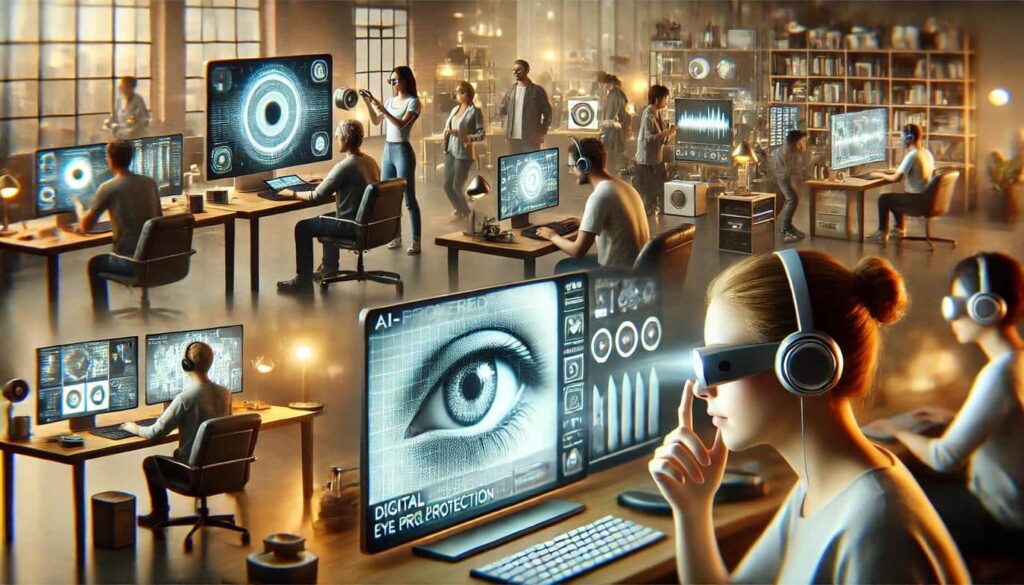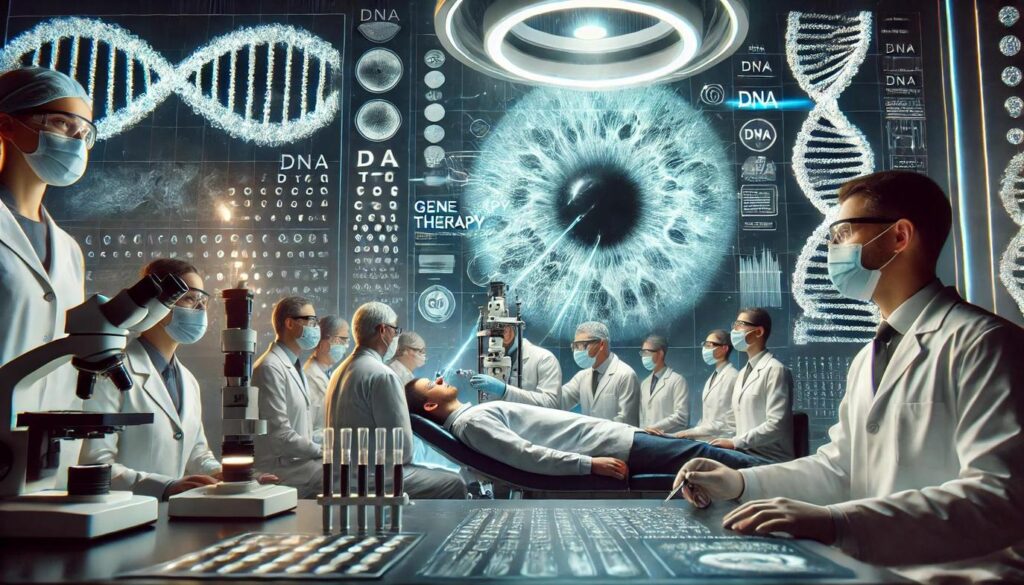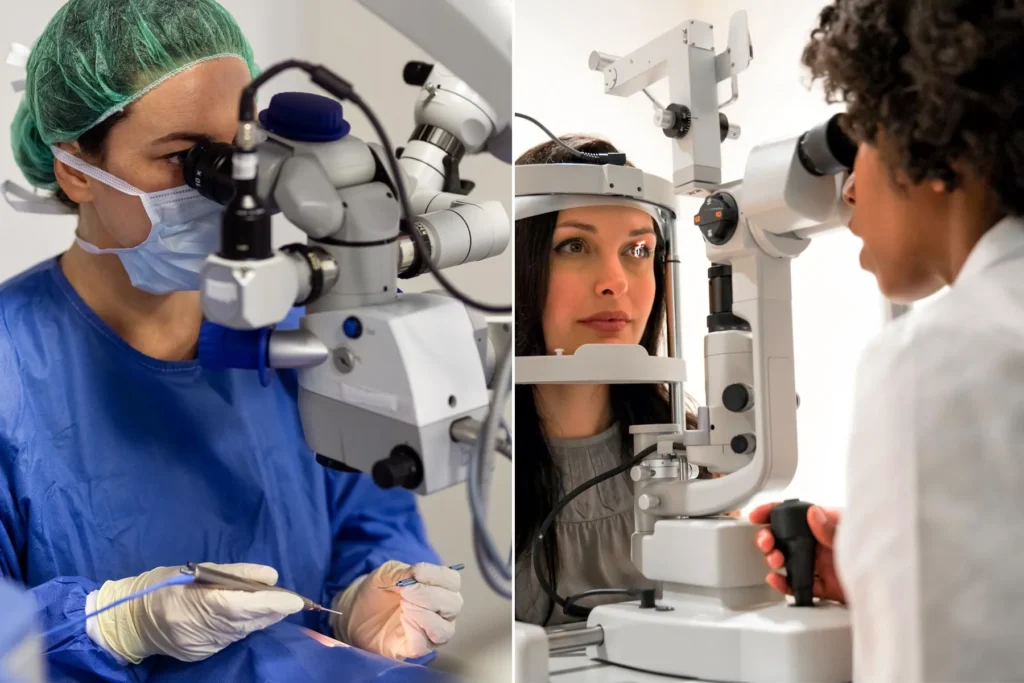Eye health isn’t only about prescription glasses and regular checkups. The way we assess or treat, and even improve vision, is changing faster than ever before, thanks to cutting-edge technology. From AI-driven diagnostics to genetic therapies and bionic eyes, what’s next for eye health shifts from correcting to prevention and restoration.
For most people, vision is more than sense. It’s how we see the world. This is why the revolution in the field of eye health isn’t just thrilling, it’s vital. In the center of the change, optometrists like St Clair Eye Clinic are dedicated to providing innovative, individualized treatment that ensures patients receive the best quality of medical attention.
AI is Changing the Way We Detect and Treat Eye Disease
AI-Powered Diagnostics are Catching Diseases Earlier
Eye diseases such as glaucoma, macular degeneration and diabetic retinopathy typically remain undiagnosed until irreparable damage is caused. The advent of artificial intelligence has changed this.
AI-driven imaging software can analyse thousands of retina scans in just a few seconds and detect irregularities with near-perfect accuracy. Google’s DeepMind for instance has developed an AI that can identify more than 50 eye disorders as accurately as a professional. These algorithms do more than assist doctors, they make eye exams more efficient more efficient and accessible to those living in remote regions where eye specialists aren’t available.
The same AI technology is being studied for the detection of warning signs of diseases that go beyond the eye. As per the Guardian, opticians could soon be able to utilize AI-powered eye scans in order to spot the early symptoms of dementia. Through the analysis of the changes that occur in blood vessels as well as the thickness of the retina, AI could help doctors detect neurological disorders before the onset of symptoms, providing the possibility of a new approach to prevention-based healthcare.
AI is Improving Eye Surgeries
Precision is essential in the field of eye surgery. AI makes procedures more precise than ever before. The robotic-assisted surgeries, aided by AI, allow delicate procedures such as LASIK or cataract surgery to be done at a minimal risk. AI can also predict the outcome of surgery, which allows doctors to tailor treatment to the specific needs of each patient.
The result? A lower risk of complications, faster recovery, and improved longevity outcomes for patients.
Smart Contact Lenses Are the Future of Wearable Eye Health

Real-Time Health Monitoring Through Your Eyes
Smart contact lenses are among of the most exciting frontiers of wearable technology for health. The lenses are designed to go above and beyond eye corrections. Advanced lenses employ AI and biosensing to track the ocular as well as general health indicators.
- Test for glucose levels without invasiveness using tear fluid for the management of diabetes
- Find intraocular pressure spikes to help with the early detection of glaucoma risk
- Sensitize dryness levels and trigger built-in water release
- Monitor changes in the optical structure in time to help support long-term eye health
These capabilities could change the way patients deal with chronic illnesses through seamless, real-time biofeedback. As wearable technology continues to advance, smart lenses are poised to become a vital tool for improvement in vision and preventative health.
Augmented Reality Contact Lenses Could Change Daily Life
Imagine looking around the world and seeing in real-time navigation messages, directions or even translations on your view. Companies such as Mojo Vision are developing AR-powered contact lenses that bring data from the internet directly within your view.
Instead of looking at a smartphone screen, you can simply look at the surroundings and get immediate information. This isn’t just for fun; it could be a significant accessibility device for people with visual impairments.
Gene Therapy is Offering a Path to Permanent Vision Restoration

Treating Genetic Eye Diseases at the Source
The majority of blindness cases stem from genetic diseases that were once thought to be incurable. Genetic therapy has changed this by addressing these problems on a molecular level.
Luxturna, the first FDA-approved gene therapy to treat sight loss, has brought back sight for patients suffering from an inherited retinal dystrophy. By delivering functional copies of defective genes directly into the retina, the gene therapy could stop the loss of vision from occurring, or perhaps reverse the process.
The Future of Gene Therapy in Eye Care
Research is expanding beyond the inherited diseases. Researchers are currently looking into gene therapy for commonly occurring conditions such as macular degeneration and retinitis pigmentosa. The aim? One-time treatment that protects and restores vision, removing the need for ongoing medication or surgery.
The National Eye Institute (NEI) is actively supporting research that focuses on cutting-edge treatments such as retinal regeneration and gene therapy. The Institute’s work is designed to speed up advancements that may one day transform permanent vision recovery into a possibility.
This could indicate that shortly, those diagnosed with these diseases may not only experience a slowing of their vision loss, they could never notice it at all.
Bionic Vision is Bringing Sight to the Blind

How Bionic Eye Implants Work
In the case of those who have lost vision completely, the bionic sight offers an exciting solution. Retinal implants, such as those in the Argus II, function by recording images using an external camera and then transmitting directly to the brain by avoiding damaged optic nerves.
While the current models only offer grayscale vision, the next versions are aiming to restore full-color, high-resolution vision.
Direct Brain Implants: The Next Frontier
Instead of relying on eye’s damaged structures are currently working on implantable devices that directly connect with the brain. Through activating the brain’s visual cortex, these implants could offer sight even for those who have total damage to the optic nerve.
The research is in the early stages; however, it is a possibility that cannot be denied. In the next few years,s the blindness issue may not only be treatable, it could even be reversed.
Digital Eye Protection in a High-Tech World

AI-Powered Vision Protection for Screen Users
The long hours spent watching screens have resulted in digital eye strain becoming of the top prevalent contemporary vision problems. The good news is that advances with AI vision technology, as well as smart display systems,s are revolutionizing how we shield our eyes from fatigue caused by screens.
- AI-driven monitors monitor the rate of blinks and suggest rest times
- Systems that adjust brightness to ambient light levels in real-time
- Blue-light filtering is dynamically responsive to the day’s time and the activity of the user.
- Smart displays customize settings based on viewing habits and feedback on eye comfort
Together, these advances aren’t just about comfort; they’re about proactive eye health. As AI is integrated into everyday devices, users will be able to expect personalized, immediate protection that will help maintain long-term eye health.
Smart Glasses are Redefining Eye Comfort
Beyond software-based solutions to wearable technology is developing to help protect your vision. Smart glasses such as Razer’s Anzu and Bose Frames combine blue-light filtering and real-time adjustments to the display, allowing users maintain their eye health without compromising productivity.
For people who suffer from migraines or are sensitive to bright light, AI-driven tinting lenses are on the way. The glasses can automatically lighten or darken depending on the light intensity of the surroundings,s which reduces strain, without needing continuous adjustments.
Virtual Reality is Helping People Relearn to See

VR-Based Vision Therapy
Virtual reality isn’t only for games, but it’s becoming an effective instrument for vision therapy. Patients suffering from conditions such as blindness (amblyopia) are making use of VR programs that require both eyes to work in tandem to retrain the brain’s vision processing pathways.
Studies have shown that VR-based therapies can bring about faster improvements than conventional treatments like eye patches.
Rewiring the Brain Through VR Vision Therapy
Augmented reality can also make navigation more accessible for people with poor vision. AR glasses can open an entirely new vision, one that allows people with low vision to get real-time descriptions, spatial clues, and even object recognition when they travel through the world. These devices are transforming mobility from being a burden to a positive experience.
If you have a person who is partially blind, it could be able to recognize signs and identify obstacles, and navigate spaces with greater certainty.
The Future of Vision Is Already Here
The development of eye health isn’t just incremental anymore; it’s exaggerated. New technologies such as AI as well as genetic therapy, smart lens, and bionic eye are changing our perception of the world, and also how we perceive the world. What was once the realm of sci-fi is a daily life, offering more than just correction of vision, but also true restoration and enhancement.
The core of this shift is the shift away from reactive care to proactive. If it’s early detection aided through AI as well as retina regenerative powered through genetics, the aim is simple: to create a time in which vision loss isn’t necessarily inevitable, but is preventable and even reversible. With these advances accelerating the process of regenerating vision, the future isn’t only glowing. It’s visible.
Eye Health Tech: Answers to Common Questions

What role can AI play in the field of eye care currently?
AI revolutionizes eye care through the ability to detect earlier diseases like glaucoma or diabetic retinopathy using the use of advanced analysis for imaging. It also facilitates robotic procedures and individualized treatment planning.
Are there smart contact lenses available to use in public?
A variety of smart lens technologies are being developed in clinical testing. But, they are anticipated to become available soon and will include features such as monitoring of glucose levels, hydration management, and even AR overlays.
Gene therapy can help bring back vision?
Yes. FDA-approved treatments such as Luxturna have been able to restore vision for those suffering from inherited retinal diseases. The research is continuing for more common ailments like macular degeneration.
What is an implant for the bionic eye, and how does it function?
Implants for the eye, such as those in the Argus II, make use of cameras to take pictures and send images to the brain, to repair damaged parts that make up the eye. They are currently limited in vision, but are advancing rapidly.
Are VR therapy beneficial for treating eye problems?
VR-based therapy has demonstrated great potential for treating diseases like lazy eye through stimulating the brain’s processing system. It’s becoming popular as a quicker, more enjoyable alternative to conventional techniques.
